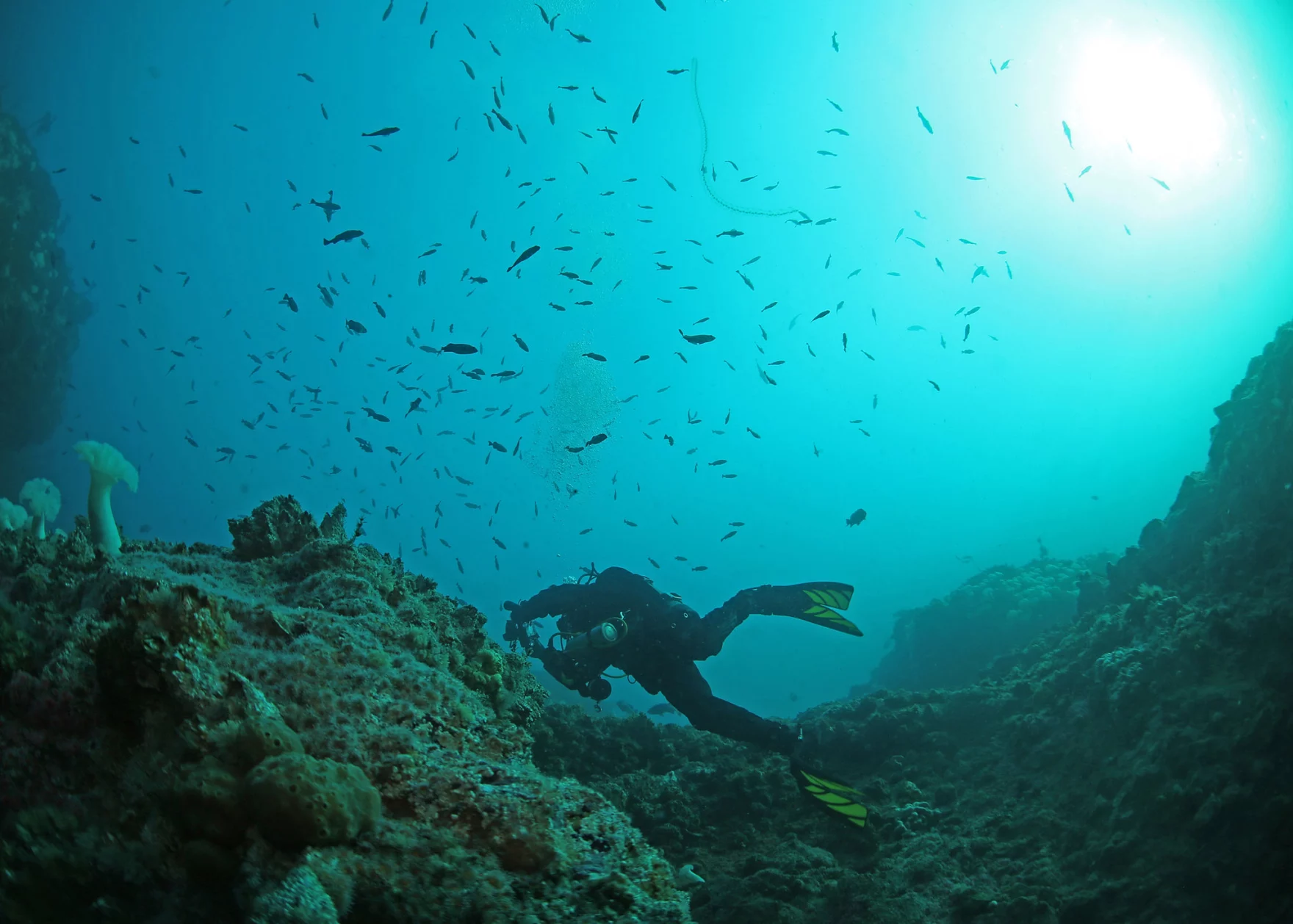The report found near-bottom levels of dissolved oxygen in the waters off of Washington, Oregon and Northern California in 2021. JPR’s Roman Battaglia talked to Jack Barth, professor of oceanography at OSU, about his report and what these low oxygen levels mean for marine life.

A diver swimming through a school of rockfish in Oregon, December 7, 2012. Because they live at the seafloor, rockfish are at risk of dying because of low-oxygen ocean conditions.
Ian Chun / Oregon Department Of Fish & Wildlife
This interview has been edited for length and clarity.
Roman Battaglia: One thing I noticed in this study was that the levels seem pretty different in different parts of the coast. For example, in northern California and the southern Oregon coast, the oxygen levels seem much higher than they are in southern Washington and the northern Oregon coast. But why is there so much variability?
Jack Barth: That was the second big outcome of the paper, is that there really are regional differences. And importantly, we can explain them by oceanographic processes. So that higher oxygen level off southern Oregon, that’s because the continental shelf is relatively narrow. So it can flush water on and off pretty effectively from the deep ocean and flush out that low oxygen water so it stays high. And it looks like a pretty good area for fisheries. As you get into the wider continental shelves off central Oregon and Washington, the water sticks around longer; it doesn’t get flushed off as effectively. So that keeps those low oxygen waters near the bottom on those wider shelves.
Battaglia: Have we determined the cause of why these low oxygen levels are happening, or why the oxygen levels are getting lower? It seems like climate change is playing a factor in that?
Barth: Let’s start by saying what drives these low oxygens. There’s a process called upwelling, where the wind drives the surface ocean to the south off our coast during the summer. And because of the earth rotating, that water spins off to the right and goes off-shore. And to fill in that hole, you basically have to bring water from depth up towards the coast and towards the surface. And that’s an amazing thing. It brings cold water, it brings nutrients, it drives the whole food web up on the shelf. However, it does come with lower oxygen from the deep ocean. And once we have that lower oxygen water, it’s not hypoxic, it’s not harmful yet. But, the next process is the phytoplankton in the surface layer, the good part, the food for the krill and the zooplankton which are then food for the fish. Those phytoplankton can fall down through the water, come to the seafloor and they decay, the bacteria gobble away at them and they consume oxygen through that process. And that’s what drives the oxygen all the way down to harmful levels.
Well, that’s going on all the time. So how does it not get hypoxic all the time? And that is because of the physics of the ocean, that flushing I was talking about. It sloshes water on and off the shelf, it mixes it up and down vertically. It’s a very active process. So those two things are kind of fighting against each other. The decay is sucking the oxygen out in the circulation and the mixing is trying to mix the oxygen back in.
So then we ask the question, “Well, how have the drivers of the system changed?” And what we show in the paper is that the wind is actually getting stronger and more persistent to the south. And that’s holding the water in place, and not allowing it to flush on and off. And those strengthening winds are actually due to climate change and the fact that we’re heating the planet. And the land actually heats up more than the ocean and it’s driving these stronger and more persistent southward winds.
Battaglia: Then I guess the takeaway from this study is that these low oxygen levels will have impacts on these different fish species that are caught. That sounds like that’s what we’ve learned here.
Barth: We know that there have been dead crabs brought up in certain areas. But to be honest, it’s very difficult to see the effects on the fish themselves unless you send a camera down or you send the net down and make those catches and that sort of thing. So right now, myself and colleagues at NOAA and others, that’s what we’re trying to figure out — what is the direct effect on the fishery? But all the signs are there that this will be a challenge for those for those species that we rely on.

